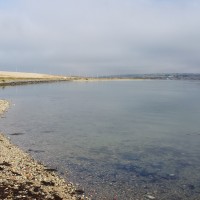Have you ever had those moments when you are fishing and see someone hooking into bass while you are blanking with every single cast? People assume that other anglers are just lucky. Well, it is true that luck does play a part, however, understanding both the behaviour of bass and using the correct tackle and methods will improve your catch rate. In this short article I will explain some tips and talk about bass tackle that will help you catch more bass.

Bass are the wolves of the sea and opportunistic predators. They do not chase down healthy fish in the same way that pelagic fish such as mackerel do. Sea bass lurk in the shallows looking for their prey. They cruise like a big mullet looking for the sick and the injured, and when located, with a burst of aggression, they swallow their prey. Bait fish almost never suspect or swim away from mullet enabling bass to sneak between large groups of mullet. Thus, they gain an advantage and the ability to surprise smaller prey including smaller mullet. When a bass attacks it is often recognised by a boil in the water, bow wave, or a sound like someone has slapped the water. If a mullet is being chased they jump fast and long. These are some of the clues you can watch out for to help you locate bass. In addition, bass use any form of cover available to them: the edge of rocks, foam of waves, shadows, weed and sand meeting points, and where muddy water meets clear water. Bass do not only take their prey from the tail but also attack from the side taking the head or belly of a fish. Usually, bass are most active at dawn and dusk and this is the time to target them.
Now we know how bass behave, what are the essential items of tackle you need to double up your bass strike rate? Firstly, a narrow leader line diameter is vital. Bass are a wily fish and any detection or abnormality will lead the bass to not strike or to lose interest in the lure. Generally, the best diameters for a regular bass session that target anything from school bass up to 12lb will need a maximum of 0.28mm leader line. Using larger diameters will be very visible for the fish in the water. Wide lines can mean no strikes at all. Thin lines are also more supple so they help the action of the lure. Fluorocarbon is preferred, but mono-filament and co-polymer lines work almost as well. My favourite line brands include YGK, GOSEN and GAMAKATSU.


It is important to understand the effectiveness of different lures and their colours in different situations. Many anglers simply put a lure on and cast it in the hope that it catches a fish, however nearly every lure can be deadly if used in the right way, at the right time, and in the right conditions. Here are three lures that should be in every bass angler’s tackle box:
1. River2Sea Rover 98, a top water lure best used with the water is clear and calm. 
2. Savage Gear Sandeel 10cm or 12.5 white (real pearl). This soft plastic lure in this size and colour can be effective at first light.
3. Tackle house feed shallow 105 white. This is the perfect shallow-diving lure when the water is a bit muddy. 
Finally, colours. My favourite colour for bass and is irresistible to bass. It’s called TRANS IWASHI and is a lure colour discovered in the late 90s. I have seen bass hit lures using this colour when everything else fails. For example:


Thanks for reading this and I hope it’s been helpful! Thanks to Fishing Tails for giving me this opportunity to share some of my knowledge on this wonderful website! Until next time, tight lines!










Hi Mohammed, thank you for your informative article. Next time I get out I will try to remember your tips. My leaders are to thick I feel also wonder about length ?
Cheers,
Peter
I use a short length of leader, normally starting off at 18 – 24 inches. I make sure it is outside the tip ring. This allows for longer casting as the knot doesn’t cause friction going through the rings.
I have to agree with Sean on this, 60-70cm are more than enough. I sometimes put a rods length but it’s situational.
Nice article thank you. What do others make of Mohammed’s suggestion to keep leader line diameter below 0.28mm. Do you try to stick to that diameter or below or do you use bigger diameter and find it fine?
0.28mm leader line equates to around 8lb.
I normally use 12lb fluorocarbon leader, but in truth I have never checked what diameter it is.
Hi alex, 0.28mm Berkley trilene equates to around 8lb flourocarbon. That’s why I don’t use Berkley personally. Other brands have 12lb for 0.28mm line alone! YGK is a prime example. If you want line recommendations feel free to reply to me. You can go higher on diameter but it depends on the situation. But for general bass fishing, 0.28 mm and 0.26 are enough for even a 20lb bass, just fight smart!
Nice article Mohammed, being new to sea fishing all these little suggestions are helping me along. ?
Hi Ian if you have any questions feel free to ask under this comment